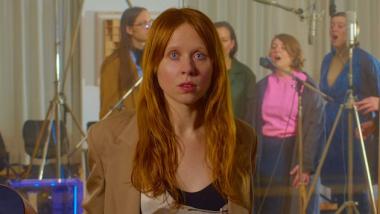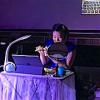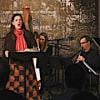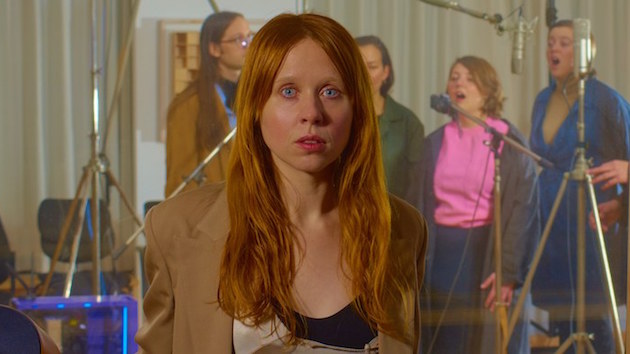
All I could catch was the phrase, “I want to belong” through the live processing that Holly Herndon applied to her voice in her solo song, “Fear, Uncertainty, Doubt.” Each pitch was scattered upward in arpeggios, distilled into a Swarovski storefront display, allowing only glimpses of Herndon’s tender, calling vocals. I wished throughout the concert that I could have understood more of the lyrics; all comprehensible shards were about heightened states of love or fear or death. Incomprehensibility is the price of this kind of heavy electronic processing, or in Herndon’s case, the price and the payout.
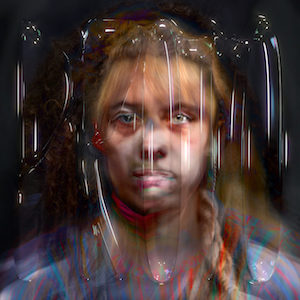
This was the second concert of Herndon’s PROTO album tour, which kicked off in New York last week. PROTO is Herndon’s third full-length album and it employs her ensemble of singers and programmers as well as her AI (artificial intelligence) “baby” named Spawn, to whom she has been teaching her own voice. Unlike other disastrous online AI experiments, Herndon has a mothering relationship to her bot, co-developed with programmer Jules LaPlace. By feeding it recordings of her voice and others, Herndon helps it learns idiosyncrasies of human expression. Spawn has now learned her voice best, and it is perhaps impossible to tell when the vocals on PROTO are Herndon’s or Spawn’s.
Holly Herndon is an experimental electronic composer and pop artist. The Teragram Ballroom, where she played, is a rock/pop/indie venue that boasts multiple bars. Besides a few a cappella moments with her ensemble of three vocalists, every piece featured sternum-shaking bass. I danced the whole show.
The whole aesthetic I would describe as Enya impaled on the Alps. If the Alps were also motherboards.
Composers in the new-music scene for the past 20 or so years have been playing with bridging the gap between different genre cultures, some to great effect and most to “meh” effect. With Herndon, even though there were discreet elements of both classical and pop worlds in her set, the product feels of a whole vision. It was enlivening to hear someone pushing so hard on the edge of live music processing technology and to feel the sweet familiar shapes of pop lead me through the experience.
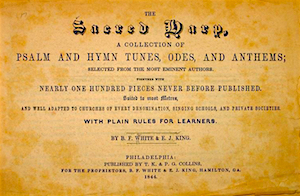
What tied together the soundscape of all the pieces was the incorporation of folk singing traditions such as American shape-note singing such as the cappella hymns from The Sacred Harp collection. Throughout Herndon’s waifish vocals were the full-chested voices of her three accompanying singers. Opening her song, “Frontier,” was a shape-note style hymn, which was then transfigured a thousand times over into an undulating whirlwind of a track.
I sensed indulgence in the epic quality of many folk singing traditions, such as shape-note. Older communal singing practices can be both small in scope — happening in homes, in churches, with few people — and larger than life in the emotional impact singing with people can have. Herndon seemed to be translating the gravity of tradition into sheer bass, and the weight of bass that can seem superfluous in others’ hands fell into place here.
Despite the mythic feeling of each piece, there were moments in which Herndon would smile or chuckle at one of her singers, small signs of her giving into the pleasure of epic-ness. The second full song consisted of the trio of singers moving slowly through a-cappella triads, which gave the piece a harmonic backbone. Over the top, Herndon would throw back her head, holding the mic like a Viking drinking horn, and produce what could only be described as the wailing of tectonic plates rubbing together. What magic hath brought this sound upon mine ears, I do not know. As the track ended, a few male voices catcalled from the audience, and the warmth on Herndon’s face acknowledged that what they just did was, in fact, sick.

